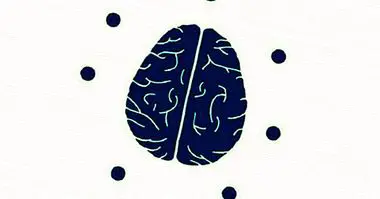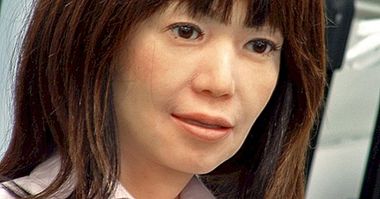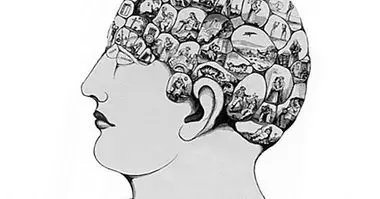What is bilingualism? The importance of speaking languages
It is easy to recognize that the phenomenon that gives title to this text is in vogue. These days we do not talk about any kind of bilingualism , Clear.
From the small prehistoric tribes that, precisely because of their small size, needed to be understood with the neighbors to negotiate, even for example koiné of ancient Greece, the ability to speak several languages has always been present and has been an essential characteristic of the most primitive societies.
What is bilingualism?
The bilingualism that we live today is that of a massively globalized world, with a clearly dominant lingua franca (English) and minority languages but that to a greater or lesser extent are exposed to the whole world. The possibility of being bilingual today means the virtual possibility of knowing any language that exists now in any place on the planet .
And all this because, at some point in human evolution, the brain became so complex and moldable that it became able to lay the foundations for a linguistic system, all its possible variants, and the ability to learn them. How is this explained?
A priori, almost all definitions of bilingualism understand that in bilingual people there is a mother tongue or dominant, and a second language (speaking in a less rigorous way, it can be understood that it can also occur when there is more than one "secondary" language, or to speak of multilingualism), and it is very rare to ignore this hierarchical distinction between languages by simply remaining in the definition of bilingualism as the ability to master two languages. The ambilingual or equilingual people are practically nonexistent. Therefore, in the vast majority of cases the bilingual person will have a primary language (L1) and at least one secondary language (L2)
However, we have not yet offered a complete definition. That's because the very conceptualization of bilingualism is a controversial issue. As some authors can argue that this only occurs when a person controls the grammatical structures of L1 and L2, there are also definitions of bilingualism as the ability to have a minimum competence in speech, comprehension, reading and writing of a language other than the maternal
Types of bilingualism
It is useful to know the distinction between additive bilingualism Y extractive bilingualism .
This classification responds to cases in which one language complements the other (the first category) and those in which one language tends to replace the other. This mechanism of substitution would be explained from the habits, customs and contexts linked to the use of languages that the same person dominates, rather than from the biological structures common to all human beings. If a language is more valued than another, it has more prestige, more is heard or there are simply no communicative situations in which one of the languages can be used, the domain of one of the languages will end up diminishing. This process is not explained, therefore by the neuropsychological bases, but it also exists.
Another important distinction is that of simultaneous bilingualism Y successive bilingualism .
The first is the result of exposure to different languages during very early stages of growth, even in the pre-linguistic stages of the first months of life. In the second, a language is learned when a well-established primary language already exists. These are constructs made to explain the differences in the domain of L1 over L2, these being more evident in cases of successive bilingualism.
The development of bilingualism
The fit between the primary language and the secondary language is made from the first expositions to speech. The first thing that is presented is a phonology cross-language : that is, a phonology that uses a repertoire of phonemes that are practically the same in both languages. Then there would be parallel development in terms of phonetics, morphology and syntax, and finally the awareness of bilingual ability (and, therefore, ability to translate deliberately).
In later stages, making learning of the contextual use of different languages, the language is related to attitudes, affects, specific situations, etc. subconsciously. That is, it becomes a contextual tool. For this reason, for example, some people always speak in Catalan in academic contexts, even if there is no written or unwritten rule that requires it. We must not forget that language acquisition and production is mediated by the environment, and it is in a specific context where a language is used.
The scientifically proven advantages of speaking several languages
There is a scientific consensus that at younger ages there is more cerebral plasticity , that is, the brain is more sensitive to external stimuli that produce changes in the nervous system. This plasticity makes it possible to learn new languages with relative ease (there is even talk of critical periods, establishing a threshold of time to which any language can be learned quickly), and this learning in turn brings many other advantages. The main advantage of these young apprentices is not only in the speed with which they can begin to speak in another language: their ability to accurately pronounce the phonemes of the secondary language in comparison to the successive bilinguals is also significant.
This marries the fact of the "unlimited range of phonemes" that newborns have. As a general rule, the closer the birth and learning of a new language are in time, the less likely it is that the ability to differentiate and produce certain phonemes used in that language will have been lost.
On the other hand, adults, when learning a language, have resources that younger children can not have. The most evident is the cognitive capacity, but also the possibility of self-motivation, of deliberate learning, etc. However, beyond the psychology of development, what makes the learning of several languages possible is the need. In that sense, both simultaneous and successive bilinguals use the languages responding to a specific context .
There are many criteria to explain and predict the bilingual development of people. From a more positivist perspective, the variable "exposure to a language" measured according to the time during which the subject is subjected to each language seems valid. The same applies to the variable "language to which it has been exposed before". However, going further we could also consider variables such as the child feels for the speaker of each language (in its closest environment, of course), the context in which it uses each language and therefore the need linked to the use of each language. language. However, this type of qualitative analysis escapes the pretensions of most lines of research, more focused on a work or academic environment defined by the asepsis and one-dimensionality of human relations.
In context
The ability of the human mind to learn more than one language can be understood both as an advantage and as a limitation. There is no doubt that this is an advantage in that allows the emergence of new ways of thinking , feel and even solve problems. There is even talk of advantages for the brain beyond the linguistic scope. However, the ability to master languages is also a limitation in a world where knowledge and skill have become features , traits that help position yourself in a competitive world always demanding new and greater competences.



















